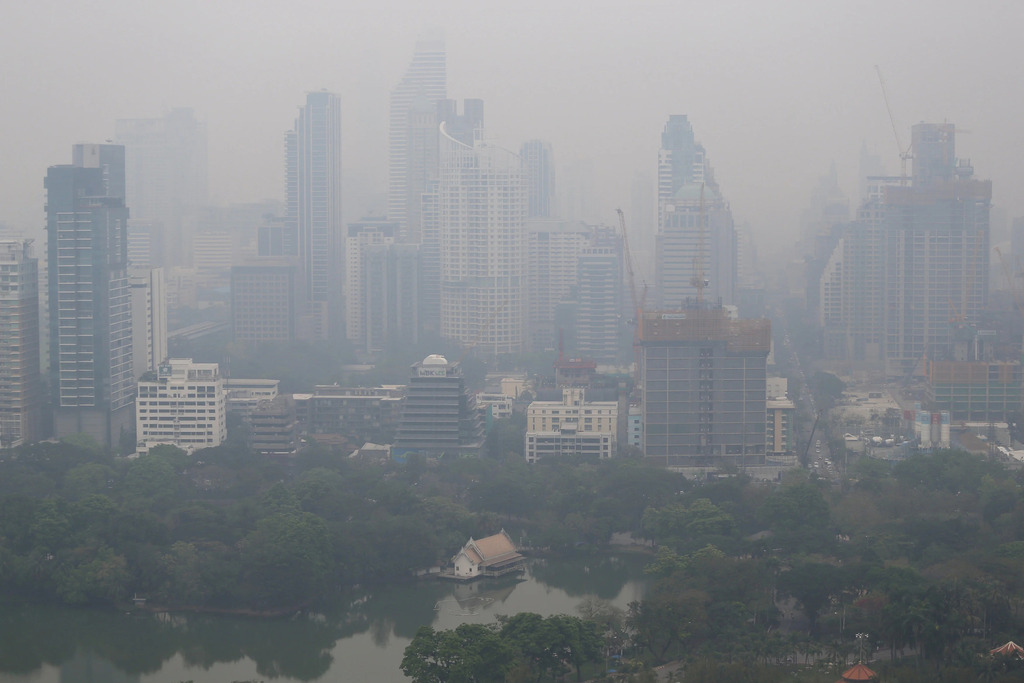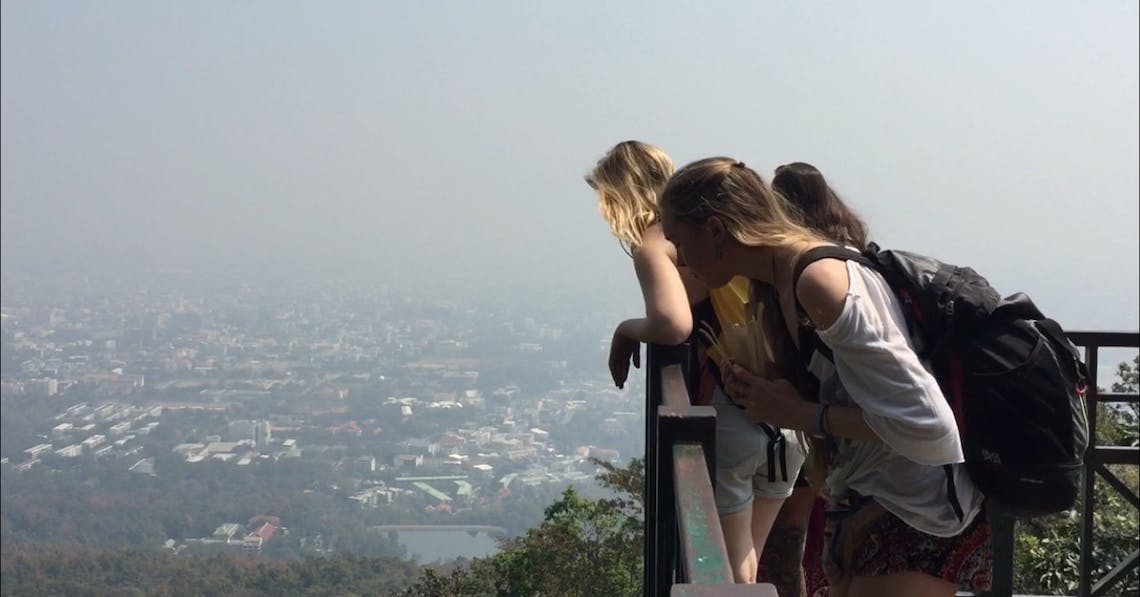On Thursday, PM2.5 air pollution in Bangkok and neighbouring Thai provinces exceeded safe levels, prompting authorities to advise residents to stay indoors and avoid strenuous outdoor activity.
According to IQAir, a Swiss air quality tracking platform, the concentration of small and hazardous airborne particles known as PM2.5 in the capital was 14 times the WHO recommended level, ranking it sixth worst in the world.
“Stagnant weather conditions,” according to the country’s pollution control department, are exacerbating vehicle emissions and seasonal fires on agricultural lands.
“We need to step up our efforts to combat pollution by encouraging people to work from home. Schools may have to restrict outdoor activities in order to protect children’s health “In a press conference, the department’s director general stated.
Residents complained about poor visibility and difficulty breathing.
“My eyes are on fire. When I have to ride a motorcycle against the wind, I can barely see “Kanjanaporn Yampikul, a 51-year-old motorcycle taxi driver, told Asia One.
On Friday, air pollution forced the closure of several Bangkok schools, as the Public Health Ministry reported that more than 370,000 patients had been sickened by inhaling ultra-fine dust particles (PM2.5).
According to the Pollution Control Department, smog continued to blanket 43 provinces on Friday, with PM2.5 dust levels exceeding the government’s safe limit of 50 microgrammes per cubic metre (g/m3) (PCD).
As of 7 a.m., PM2.5 levels in most areas of the North ranged from 34-154ug/m3, 29-96g/m3 in most areas of the Northeast, 48-117g/m3 in most areas of the Central Plains and West, 32-79g/m3 in four areas of the East, and 10-25ug/m3 in the South.
Atmospheric PM2.5 levels in Bangkok and surrounding areas ranged from 54 to 119 g/m3, forcing several schools to close temporarily.
On Thursday, Chulalongkorn University Demonstration Secondary School in Pathumwan district announced on Facebook that it would be closed on Friday due to respiratory concerns among its students.
Classes would be held online, and the school would reopen on Monday.
In the North, 17 provinces were keeping a close eye air pollution, particularly on Friday.
According to the Public Health Ministry, 376,165 people were affected by air pollution-related health problems this week, an increase of 163,491 from the previous week.
More than 165,000 of these patients had respiratory diseases, 80,248 had skin diseases, and 70,206 had eye inflammation.
According to Narong Aphikulvanich, deputy permanent secretary for the Ministry of Public Health, public health emergency operation centres have been established in 14 provinces affected by PM2.5 to deal with the problem more effectively.
Bangkok, Lamphun, Chiang Mai, Sukhothai, Nonthaburi, Pathum Thani, Ayutthaya, Saraburi, Ang Thong, Samut Sakhon, and Ratchaburi are among them.
According to Iqair.com, the US AQI (air quality index) value for Chiang Mai was 164, and the level of PM2.5 was 84.7g/m3 as of 11 a.m. on Friday, both of which exceeded standard safety levels and could have negative health consequences.
As a result, Chiang Mai briefly became the 14th most polluted city in the world, surpassing Bangkok, which had a US AQI of 88.
After changing its guidelines last year, the WHO now recommends that average annual PM2.5 concentrations be no higher than five micrograms per cubic metre, stating that even low concentrations pose significant health risks. The current level in Bangkok and surrounding areas is 70.5 micrograms per cubic metre.
According to the WHO, exposure to outdoor air pollution causes 4.2 million premature deaths each year.








